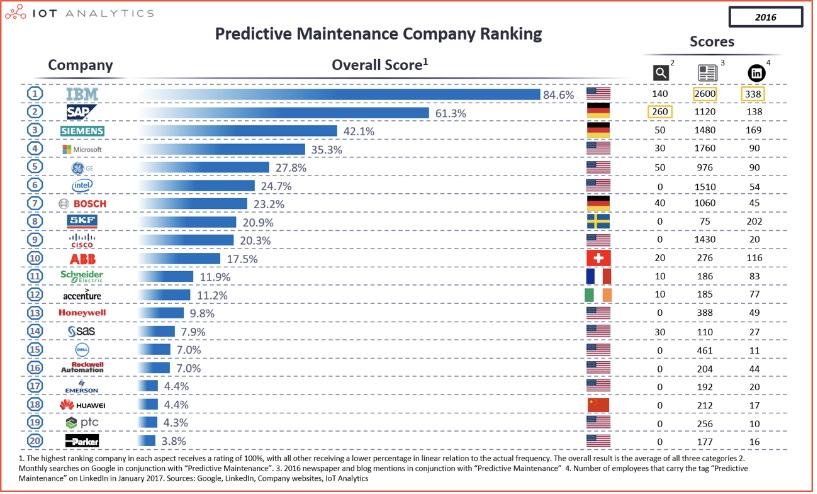IoT and maintenance authority

Joseph Zulick of MRO Electric and Supply
If you want to be a leader and not a follower in the plant maintenance world, buckle up, IoT is here to stay!
Is your maintenance department a focus of technology? Most maintenance facilities do the best they can using technology that takes their department to the bare minimum, says Joseph Zulick, a writer and manager at MRO Electric and Supply.
Most of the maintenance areas don’t have a good tracking system and are not integrated into the rest of the plants ERP system. This is the case for many due to the system charging stock against job orders without having an effective way to track or allocate this overhead.
Many plants have taken the approach of outsourcing their maintenance parts if not their entire maintenance service, this really limits ingenuity. These services are for profit and work on narrow margins that are not looking to improve your facility through their external inventory systems. These groups make their living off providing the parts and charge a premium for the parts when they are used.
This means the inventory is not owned not paid for by the manufacturer and is instead owned and managed by the third party. For these reasons it is difficult to lead in this area. But for most companies they are not looking at the big picture and the savings created by information. Most IoT systems are focused around production and not around maintenance despite the fact that maintenance is the area that can gain the most!
Production sees the value in improving Lean processes to eliminate their waste. This data plays a great part in this area. Six Sigma can make gains in this area, but maintenance shows up the most on the six-sigma side since the focus here is on keeping production levels at their optimum which means predictive downtime not just preventive.

You can do all the preventive maintenance you want, (most don’t and sacrifice maintenance regularly), but if you want to maintain a level of maintenance you must have an estimate of when downtimes will occur. This is the only way to truly PLAN for this impact. You must know when you expect this occur and have those replacement parts on hand. Most replacement parts unless they are very common are not kept on hand by these third-party services and not by many more manufacturers, (not many companies want to sit on a $5000 (€4490) spare motor in the anticipation that in may go down in 4 years). This is exactly why the value of Predictive maintenance is being preached by the leaders of industry.
If your maintenance department is not using IoT, you are falling behind. The big reason is data. Data is only valuable as you start to monitor and build a database. If you think Predictive maintenance comes without a database and data, you’re thinking of a crystal ball.
Data points that indicate the nearness of a failure and an estimated timeline based on previous failures must be maintained and watch in a diligent manner. AI can analyse this data to determine the points in time.
Difficulties in just having one single model for your AI system. Since most manufacturing does not just build one item day in and day out, this deviation throws a monkey wrench into the model. AI plays a crucial role in processing this data. You must know that switching between parts will either accelerate a failure or retard the failure. History and more intelligent, well-defined data both help to optimise an eta for failure.
The data also helps you determine the date when a replacement item must be purchased in order to have it in your hand when the date comes. This reduces cost of air shipping in parts and scheduling special service instead of integrating it into your schedule. Lastly it helps by not forcing you to outsource the manufacturing to an outside processor. This prevents overinflated premiums for rush work.
Reaction is not acceptable in manufacturing any longer. The first question is how did this failure happen? Followed by what could we have done to prevent this downtime? It’s a not acceptable to not have a contingency plan, despite the fact that most maintenance departments are behind the curve on IoT. It is obvious that the leaders in this arena will have more than just stature and name only, they will be the ones to lead their companies into an historic time of manufacturing.
From Reliable plant (2), key performance indicators or metrics include mean time between failures (MTBF) and mean time to repair (MTTR), are a couple of KPI that should have automated reporting to remove the human interpretation of what time is used to repair the system and how long it is from one failure to another. These are very important when your AI is trying to discern the eta to the next failure.
In many companies you are not monitoring data from just one location, you have multiple facilities that are needing IoT integration. The AI must integrate this data and the system needs to take it into account. Maintenance in one facility needs to understand failure at other facilities in order to have the artificial intelligence factor in a greater information profile. More data gives the AI a broader picture to work with. It’s far better to have more information and not need it than to need it and not have the information.
Information without perspective is a bad thing also. There are varying degrees of impact each item has in data. As an example, a high degree of direct impact may be part measurement or go / no go measurement. This has a level of direct feedback on the quality of the part. This information can be monitored and trended to show wear of tooling and machinery.
Next level of measurement down one level is indirect feedback where the data does not show up in the results directly but does show that it is corroborating the results. In motors, measuring bearing wear through vibration and temperature, these are often valued as direct because it does indicate wear and a failure pattern. While it’s not directly tied to quality, it is tied to failure and will greatly impact quality.
Current measuring of the motor is a great example of indirect. Increases in motor current can be from many issues, material thickness, tooling wear along with obvious failure but it can’t be directly assumed that higher current automatically means failure. The lowest level starts to show us data that is low level indirect and you may see as less impactful. Let’s say for example you turn on a toaster and it doesn’t trip a circuit breaker but add a light and it trips. The light on its own never trips the breaker.
The breaker tripping, it is more directly tied to the cause of the toaster, but monitoring the light has some impact but only when combined with the data of the toaster. This shows that all data is not equal. The value sometimes is only in conjunction with other data that may require integration from one system to another. Data mapping is the most undervalued process currently in plants.
Manufacturing is taking notice and the world class plants are leading the way in data analysis and more importantly action based on data. The gains from automating data both gathering and automating the process action tied to the data is vital. If. Know that a bearing is at 80% wear and is estimated to fail in 4 weeks, the automation should be that the part is automatically ordered knowing that the part has a 2-week lead time.
The author is Joseph Zulick is a writer and manager at MRO Electric and Supply.
Comment on this article below or via Twitter @IoTGN
